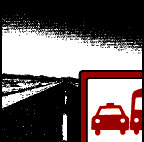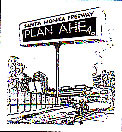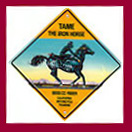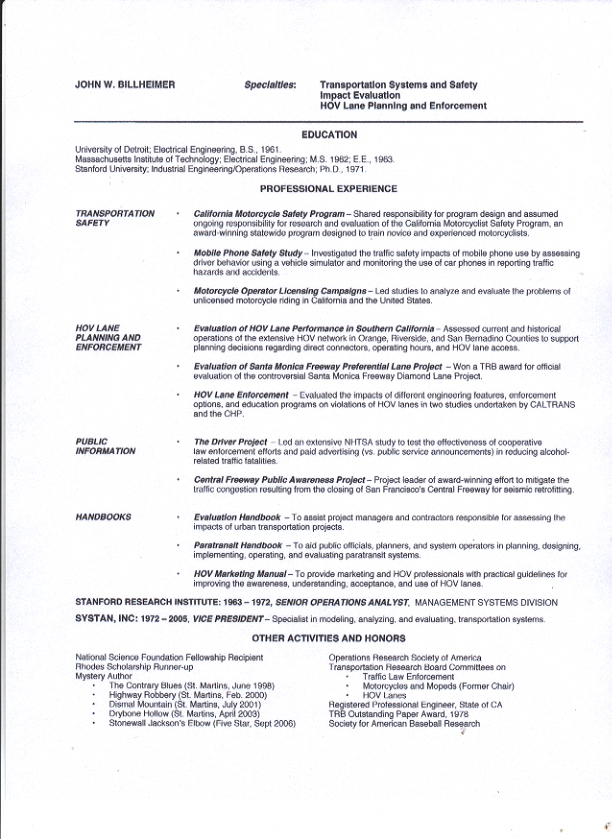

John Billheimer holds an engineering Ph.D. from Stanford University and has over forty years of experience providing professional consulting services in systems analysis for government and industry. Specializing in transportation research, he has investigated such diverse topics as commuter lane performance, mobile phone safety, drunk driving countermeasures, DMV service, video surveillance, and motorcycle safety.
Teaching
Drawing on his experience as a mystery author and a lifelong love of movies, Dr. Billheimer has taught several courses in Stanford’s Continuing Studies Program that explore the key elements of mystery fiction as conveyed in film and print.
REPRESENTATIVE COURSES
Hitchcock and the Censors. The Production Code established by the Motion Picture Producers and Distributors of America controlled the final cut on all films distributed in the U.S. from 1934 to 1968. Code censors demanded an average of twenty-two changes, ranging from the mundane to the mind-boggling, on each of Alfred Hitchcock’s films during this period. No production escaped these changes, which rarely improved the finished film. Censors dictated the ending of Rebecca, shortened the shower scene in Psycho, absolved Cary Grant of guilt in Suspicion, and decided which window shades should be drawn in Rear Window.
This course traces the rise of censorship in both Britain and America, examines each of Hitchcock’s thrillers in the light of the censors’ demands, and details the director’s responses to these demands through film clips, documenting his dexterity as he sidestepped censorship to produce a lifetime of memorable films.
The Modern Mystery in Film and Print. This course examines the modern mystery novel as developed by pioneers Dashiell Hammett and Raymond Chandler, as well as many current practitioners, including Elmore Leonard, Michael Connelly, and Dennis Lehane. The course explores the key elements of mystery fiction: plot, character, dialogue, theme, humor, and elements of mystery fiction: plot, character, dialogue, theme, humor, and setting, using examples drawn from masters of the genre. Film clips illustrate the work of key authors and illuminate the role of cinema and TV in popularizing the mystery. (Stanford Continuing Studies Program)
Masters of the Hardboiled Mystery in Film and Print. This course examines the hardboiled mystery as practiced by three masters of the genre, Dashiell Hammett, Raymond Chandler, and Ross Macdonald. Their works are examined against a background of the literature and social conditions of their times and the lives of the authors themselves. The many film adaptations of their works are used to explore the relationship between cinema and the written word. (Stanford Continuing Studies Program)
The Politics, Passions and Personnel of Film Noir. From its origins in the early forties with such films as Laura and Double Indemnity to its resurgence in such “neo-noir” films as Chinatown and Body Heat, the cycle of American cinema known as film noir has become one of the most influential movements in film history. This course traces the social conditions that gave rise to the cycle, examines its literary, artistic, and philosophical underpinnings, and tracks its critical reception, themes, and cultural influence. Well-known and little-known films in the noir canon are discussed, and film clips are used to illustrate the individual contributions of studios, directors, writers, cinematographers, actors, and actresses. (Stanford Continuing Studies Program, taught with Eddie Muller)

The Literature of Film Noir. This course examines the literary underpinnings of the film noir cycle, reviews the lives of famous and lesser known authors (which were sometimes as dark and tragic as their work), and tracks the critical reception, recurring themes, and cultural influence of both the novels and the films they inspired. (Stanford Continuing Studies Program, taught with Eddie Muller)
Research & Analysis
For over thirty years, John Billheimer was Vice President of SYSTAN, Inc., a small consulting firm specializing in transportation research. During this time he investigated such diverse topics as commuter lane performance, mobile phone safety, drunk driving countermeasures, DMV service, video surveillance, and motorcycle safety. Recent projects undertaken as a private consultant have entailed evaluations of California’s HOV lane network and a quantitative assessment of the impacts of motorcycle training.
Typical research areas include:
- Safety studies
- Reference works
- Impact analysis
- Emergency management
Safety Studies
Dr. Billheimer has helped to design, implement, and evaluate many programs which have produced measurable results in reducing accidents and improving the safety of the nation’s transportation networks.
REPRESENTATIVE PROJECTS
California Motorcyclist Safety Program. Shared responsibility for design and implementation and assumed ongoing responsibility for research in the California Motorcyclist Safety Program, an award-winning statewide program designed to train novice and experienced motorcyclists and increase public awareness of motorcycle safety. The program’s training is mandatory for riders under 21 seeking a state motorcycle license, and California motorcycle fatalities dropped over 65% during the first fifteen years of the program. (Client: California Highway Patrol)

Motorcycle Operator Licensing Campaigns. Studied and analyzed the problem of unlicensed motorcycle riding in California and the United States. Studies let to the development of public information campaigns designed to alleviate this serious problem, which accounts for over 40% of the nation’s motorcycle fatalities. (Client: National Highway Traffic Safety Administration and California Department of Motor Vehicles)
Mobile Phone Safety Study. Investigated the traffic safety impacts of mobile phone use by assessing driver behavior using a vehicle simulator and monitoring the use of car phones in reporting traffic hazards and accidents. (Client: California Highway Patrol)

The DRIVER Project. Extensive study designed to test the effectiveness of cooperative law enforcement efforts and paid vs. public service advertising in promoting awareness of drunk driving issues and reducing alcohol-related traffic fatalities. The project team developed a public information campaign featuring the positive image of a designated teenage driver that caused alcohol-involved accidents to drop significantly in areas where paid advertising was purchased on network TV. (Client: National Highway Traffic Safety Administration)
Reference Works
Dr. Billheimer’s research has included the development of several handbooks and manuals designed to support the planning, evaluation, and marketing of a variety of transportation innovations, including HOV lanes, paratransit systems, and drunk-driving enforcement.
REPRESENTATIVE PROJECTS
HOV Marketing Manual. Developed a nationally distributed manual that provides marketing and planning professionals with practical guidelines for improving the public awareness, understanding, acceptance, and use of HOV lanes. The manual includes case studies of successful and unsuccessful HOV projects and details the steps necessary in planing, implementing, monitoring, and evaluating HOV marketing campaigns. (Client: Federal Highway Administration)
Evaluation Handbook. Developed handbook to assist project managers responsible for evaluations of the social and economic impacts of urban transportation innovations. (Client: U.S. DOT)

Paratransit Handbook. Developed a handbook to aid public officials, planners and system operators in planning, designing, implementing, operating and evaluating paratransit systems. The handbook includes a state-of-the-art review, as well as a compendium of techniques and experience drawn from existing dial-a-ride and shared-ride taxi services. (Client: U.S. DOT Transportation Systems Center)
Anti-DUI Campaign: Planning, Implementation, and Evaluation Guidelines. One outcome of The DRIVER Project, a public information/law enforcement campaign aimed at reducing alcohol-related fatalities, was a separate set of guidelines designed to enable public agencies to conduct and evaluate anti-DUI programs. (Client: National Highway Traffic Safety Administration)
Impact Assessment
Dr. Billheimer has evaluated a number of complex programs by quantifying the full range of their impacts–both anticipated and unanticipated. He pioneered the planning and evaluation of HOV facilities from the inception of the concept and was one of the first analysts to document the effectiveness of motorcycle training in reducing crashes.
REPRESENTATIVE PROJECTS

Santa Monica Freeway Diamond Lanes. Conducted award-winning evaluation of the controversial Santa Monica Freeway Diamond Lane Project. The evaluation assessed the impacts of converting an operating freeway lane to a carpool lane on carpool formation, traffic safety, congestion, law enforcement, travel times, mode choice, media reaction, and public opinion. (Client: U.S. DOT Transportation Systems Center)
HOV Lane Enforcement. Evaluated the impacts of different engineering features, enforcement options, and education programs on violations of HOV lanes. Studied the impacts of different violation rates on safety, freeway performance, and public attitudes, and produced guidelines for future CHP enforcement strategies. (Client: California Highway Patrol)
Videotape Surveillance and Enforcement.
Demonstrated and evaluated the potential use of videotape in HOV lane
surveillance and enforcement. (Clients:California Highway Patrol and
CALTRAIN )

Motorcycle Training Effectiveness. Undertook a matched-pair analysis of trained and untrained motorcyclists to ass the eff of formal motorcycle training on accident rates and traffic violations. (Client: CHP)
55 MPH Enforcement. Evaluated the effectiveness of 55 MPG enforcement program consisting of a combination of aerial surveillance, public information, and police patrols in reducing speeds on selected highway segments. (Client: California Highway Patrol)
California HOV Network. Assessed the current and historical operations of the extensive California network of HOV lanes to support planning decisions regarding future design, direct connectors, operating hours, and HOV lane access. (Client: CALTRANS)
Emergency Management
Dr. Billheimer has led several studies of the nation’s transportation and logistics networks under emergency conditions and developed guidelines to assist in the management of key resources before and after disaster strikes.
REPRESENTATIVE PROJECTS
California Earthquake Residual Transportation Capability Study. Investigated the ability of transportation facilities in California to survive four postulated earthquakes. (Client: U.S. DOT Transportation Systems Center)

Emergency Food Distribution. Developed planning guidance and data to support the distribution of food following disasters and emergency evacuations. A nationwide data base was prepared documenting the location and destination of manor wholesale stocks on a county-by-county and distributor-by-distributor basis. In addition, a prototype emergency food distribution plan was developed for a representative distributor, SAFEWAY, Inc. (Clients: California Office of Emergency Services; Federal Emergency Management Agency)
Evacuation Traffic Control. Undertook a detailed study of the traffic control problems likely to arise in emergency evacuations. Conclusions and recommendations regarding promising emergency traffic control procedures were summarized in a guidance manual for public safety officials charged with emergency traffic regulation. (Client: Federal Emergency Management Agency)

SaFER (San Francisco Earthquake Retrofit) Public Awareness Project. Led project to inform public and mitigate the traffic impacts on an extensive series of seismic retrofit activities undertaken by CALTRANS in San Francisco. (Client: CALTRANS)
Videotape Workshops for Transportation Industry Representatives. Conducted workshops to facilitate emergency transportation planning in three U.S. cities and developed a videotape presentation and guidance materials to encourage similar workshops in other metropolitan areas. (Client: Federal Emergency Management Agency)
Curriculum vitae

